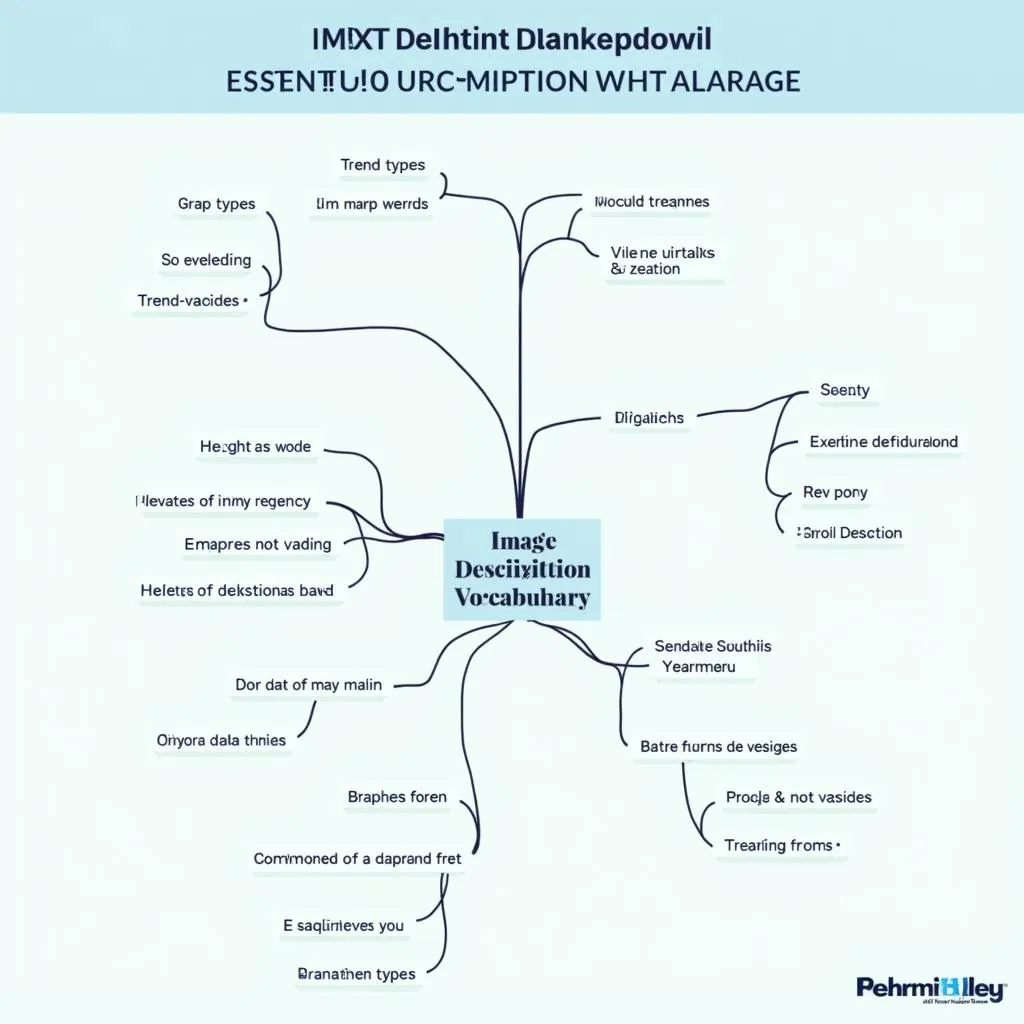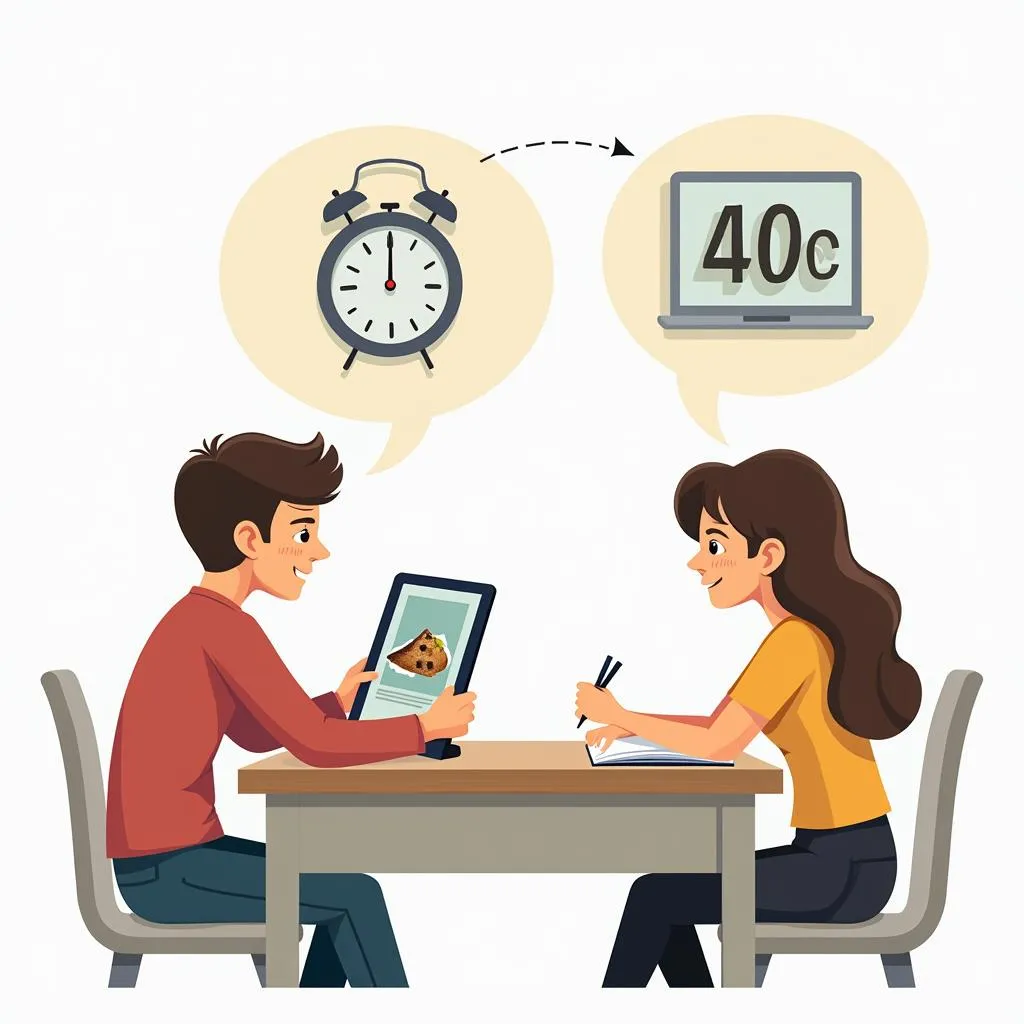Describing images is a crucial skill in the PTE Academic test. This task assesses your ability to analyze visual information and articulate it clearly in English. In this comprehensive guide, we’ll explore effective strategies on How To Practice Describing Images In PTE, helping you boost your confidence and score higher on test day.
Understanding the PTE Image Description Task
Before diving into practice techniques, it’s essential to grasp what the PTE Image Description task entails. This section of the speaking test requires you to describe an image in detail within 40 seconds. The key is to provide a clear, coherent description that covers the main elements of the image while demonstrating your English language proficiency.
 PTE Academic Image Description Task
PTE Academic Image Description Task
Key Strategies for Effective Image Description
1. Develop a Structured Approach
One of the most crucial PTE speaking tips for high score is to follow a structured approach when describing images. Here’s a step-by-step guide:
- Start with a general introduction of the image (5-7 seconds)
- Describe the main features or trends (15-20 seconds)
- Provide specific details or examples (10-15 seconds)
- Conclude with a brief summary or overall impression (5-7 seconds)
2. Practice Time Management
With only 40 seconds to describe an image, time management is crucial. Here are some tips:
- Use a stopwatch during practice sessions
- Allocate specific time slots for each part of your description
- Learn to pace yourself and avoid spending too much time on minor details
3. Expand Your Vocabulary
A rich vocabulary is essential for accurate and detailed image descriptions. Focus on:
- Terms related to graph types (bar graph, pie chart, line graph)
- Words to describe trends (increase, decrease, fluctuate)
- Comparative and superlative adjectives
- Transition words and phrases
“Expanding your vocabulary is like adding colors to your linguistic palette. The more words you know, the more vivid and precise your image descriptions will be,” says Dr. Emma Thompson, a renowned PTE preparation expert.
 Vocabulary Expansion for PTE Image Description
Vocabulary Expansion for PTE Image Description
4. Analyze a Variety of Image Types
To prepare thoroughly, practice with diverse image types:
- Graphs (line graphs, bar charts, pie charts)
- Maps
- Processes or cycles
- Photographs or illustrations
Exposure to various image types will help you develop versatility in your descriptive skills.
Common Mistakes to Avoid
While practicing, be aware of these PTE common mistakes to avoid:
- Spending too much time on irrelevant details
- Neglecting to mention the main trend or purpose of the image
- Using memorized phrases that don’t fit the specific image
- Speaking too quickly or unclearly in an attempt to say more
Effective Practice Techniques
1. Use Online Resources
Take advantage of online PTE practice platforms that offer a wide range of sample images and timed practice sessions.
2. Record and Analyze Your Responses
Recording yourself and listening back to your descriptions can help you identify areas for improvement in content, fluency, and pronunciation.
3. Practice with a Study Partner
Describing images to a study partner can help you gain confidence and receive valuable feedback. Take turns describing and listening to each other’s responses.
 PTE Study Partners Practicing Image Description
PTE Study Partners Practicing Image Description
4. Incorporate Real-World Practice
Look for opportunities to describe images in your daily life. This could include:
- Describing infographics in news articles
- Explaining charts or graphs in business reports
- Detailing photographs or artwork you encounter
Enhancing Fluency and Pronunciation
To practice speaking fluently for PTE, focus on:
- Regular speaking exercises to improve overall fluency
- Pronunciation drills, especially for challenging sounds in English
- Practicing stress and intonation patterns
“Fluency in image description comes from consistent practice and self-awareness. Record yourself, listen critically, and always strive for improvement,” advises Professor James Clark, a leading voice in PTE preparation.
Conclusion
Mastering the art of describing images for PTE requires dedication, structured practice, and attention to detail. By following these expert tips and strategies, you’ll be well-equipped to tackle this challenging task with confidence. Remember, the key to success lies in consistent practice and a willingness to learn from your mistakes. Start implementing these techniques today, and watch your PTE image description skills soar!
FAQs
-
How many images do I need to describe in the PTE test?
You’ll typically need to describe 3-4 images during the speaking section of the PTE Academic test. -
What if I don’t understand the image I’m presented with?
Focus on describing what you can see, even if you’re unsure of the specific context. Use general terms and describe the visual elements to the best of your ability. -
Is it necessary to use complex vocabulary when describing images?
While a varied vocabulary is beneficial, clarity and accuracy are more important. Use words you’re comfortable with and that accurately describe the image. -
How can I improve my timing for image descriptions?
Regular timed practice is key. Set a 40-second timer for each practice session and gradually work on covering all necessary points within this timeframe. -
Should I mention every detail in the image?
No, focus on the main features and trends. Trying to describe every detail can lead to running out of time or missing the overall purpose of the image.